The evolution of Baishakhi celebrations
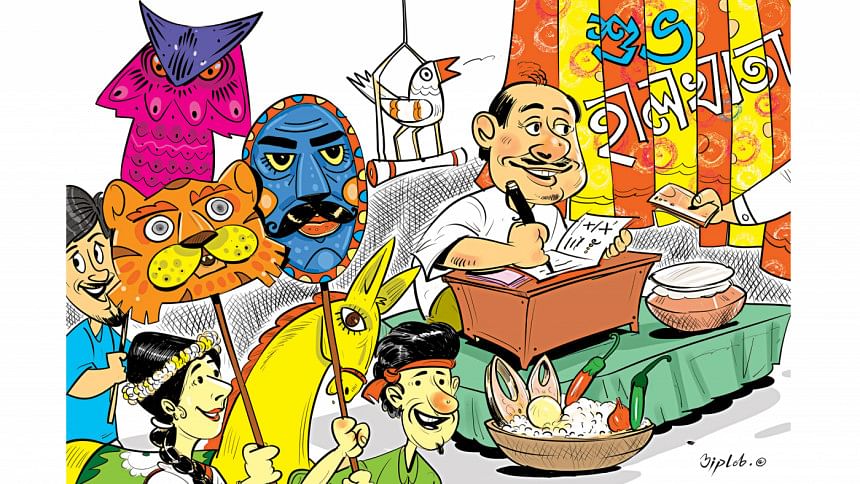
As the first day of the Bangla calendar, Pahela Baishakh is celebrated with festivity, enthusiasm, and interest. The Baishakhi celebration is colourful and has become a significant part of our culture, so much so that it has transcended borders. Like all things, Noboborsho too has a history and it has influenced how the event is celebrated.
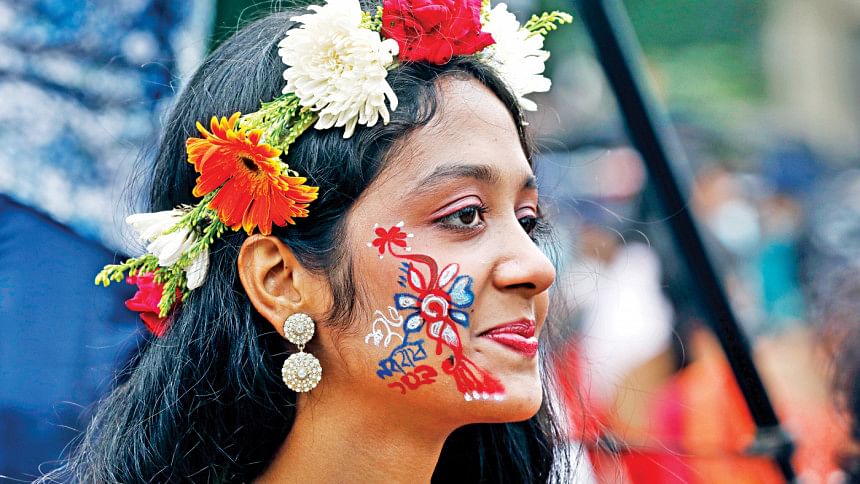
The origin of Pahela Baishakh
It was Mughal Emperor Akbar who facilitated the Bangla calendar or Bangabda. The emperor's interest in reforming the calendar was strictly for economic reasons.
Back in those days, taxes were collected according to the Hijri calendar, which is a lunar calendar and was not in sync with agriculture. This confused the farmers and the emperor sought a solution. Upon his commission, Fatehullah Shirazi formulated a new calendar by aligning the Islamic calendar with the harvest season and thus, solving the issue. That's how Bangabda came into being and we got our Pahela Baishakh as the first day of the year.
After several adjustments to the calendar, Pahela Baishakh now always falls on the 14 of April of the Georgian calendar.
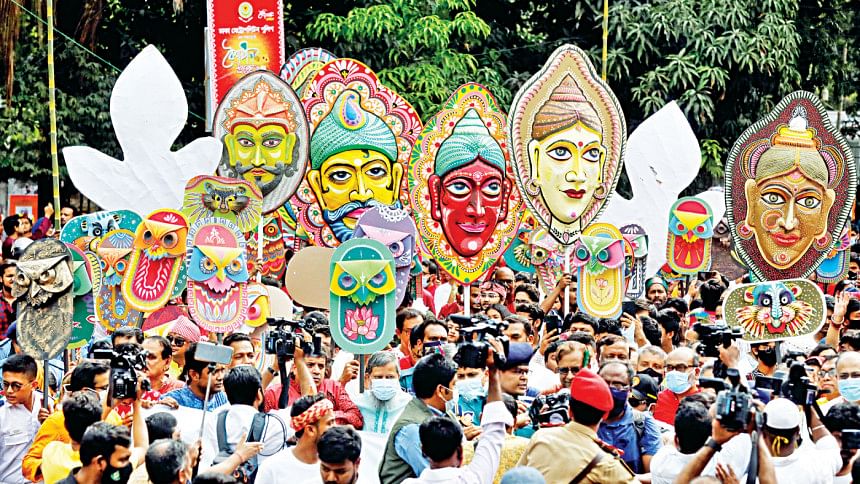
Celebration through the ages
We often say that Bengalis are a festive lot. Whenever there's an excuse to celebrate, we accept it with the beat of a heart. Out of all these celebrations, Pahela Baishakh is possibly the most unique with the greatest cultural impact.
The earlier celebrations of Pahela Baishakh involved halkhata. It has survived the test of time and still can be spotted in the shops and businesses in rural areas. Halkhata is the opening of a new book for businessmen (once upon a time, Zamindars as well). Festive decorations go hand in hand with halkhata in the form of confetti, flowers, and colourful designs.
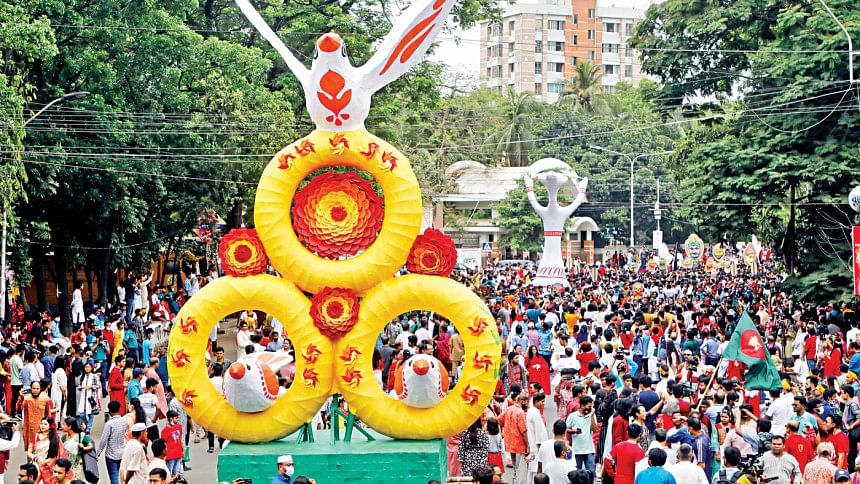
Chaitra Sankranti is also another event that has co-existed with Pahela Baishakh. It celebrates the end Chaitra, the last month of the Bangla calendar. The event used to be more prominent in the rural areas than the cities and its celebrations usually involved fairs and festivals.
Red and white attire has been a symbol of Pahela Baishakh for ages. Another tradition is Baishakhi mela (fair). Sometimes these fairs last for a whole month. Kadma, jilapi, sandesh, and such sweetmeats are part of these fairs just like nagordola and bioscope.
As far as organised celebrations are concerned, Chhayanaut and Charukala are the two entities that lead the celebrations of Nababarsha.
Baishakh at Ramna Botomul
The ceremony that essentially kicks off Pahela Baishakh is hosted by Chhayanaut, a cultural organisation established in 1961. When they started the Baishakhi celebration, it was an informal arrangement but the Pahela Baishakh celebration that we have come to know and love as the iconic event of Ramna Botomul began with Chhayanaut in 1967.
With only a handful of artistes, Chhayanaut's first Nababarsha celebration began at the altar of the huge bot (banyan) tree. Interestingly, it's an ashwattha tree but the place is well known by the mellifluous name — 'Ramna-r Botomul.' It has become such a tradition that it's grown into an event that is synonymous with Pahela Baishakh. What began with a handful of artistes is now a culturally significant event.
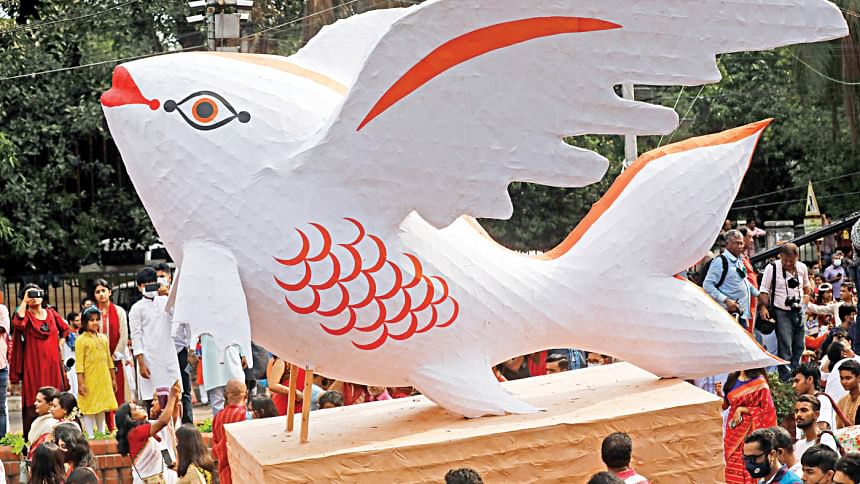
Since liberation, Pahela Baishakh has grown into a national festival for all Bangladeshis irrespective of caste and creed. And it's not just confined within the border anymore either.
The Mangal Shobhajatra and its evolution
While the programme at the Ramna Botomul is indeed a Baishakhi tradition, Mangal Shobhajatra is arguably more iconic in all senses.
The first step towards it was in 1985, hosted by Charupith (an art research institute) in Jessore. Sculptor Mahbub Zamal Shamim was one of the key persons who nursed the idea and initiated the procession. Back then, it was not known as Mangal Shobhajatra, but rather Pahela Baishakh Shobhajatra.
The next step towards Mangal Shobhajatra was what eventually evolved into the Mangal Shobhajatra that we know today. It happened a couple of years after Charupith's Shobhajatra had started and although it was slightly different, there is no doubt that it was indeed inspired by Charupith's Shobhajatra. Following the overwhelming appreciation for a Shobhajatra in December of 1988 in Dhaka, it was decided that the Pahela Baishakh of 1989 will feature a Baishakhi Shobhajatra.
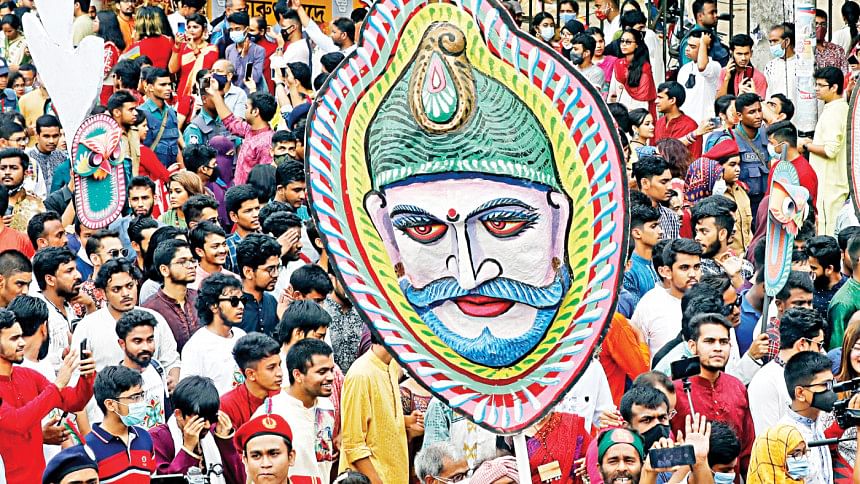
"Ananda Shovajatra is what it was called at first. The country was in a critical political position at that time and the people were starting to protest. There was this idea of opposing all that is bad and evil. 'Omongol er biruddhe jatra' (journey against evil) was the idea; that's how the name of Mangal Shobhajatra came into being," explained Professor Nisar Hossain, Dean of Faculty of Fine Arts, University of Dhaka, pointing out that 1990 was the first time the possession came out, owning the name 'Mangal Shobhajatra' for the first time. And it became Mangal Shobhajatra because of its socio-political thought and impact of it.
Preparation for the Big Day
Charukala is essentially the centre of the Nababarsha celebration in Dhaka. Not only does Charukala host the Mangal Shovajatra but also puts great effort and invests a lot of time into it. And its admirable how many challenges they take on every year to make this event a success. From the smaller details like the masks and items of the procession to the details like fundraising, they do it all.
Charukala students start working a month before the actual celebration.
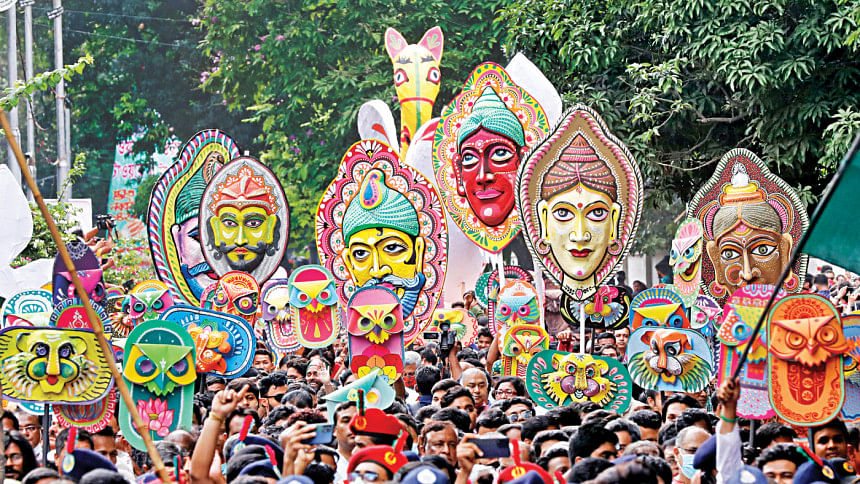
"The students work in making the structures and masks for Mongol Shobhajatra. They make paintings, hand-painted masks, paper birds, hand fans, earthen pots, and other items for fundraising. They also prepare a cultural programme for Chaitra Sankranti. Moreover, a jatra takes place on the 2nd of Baishakh participated by current and ex-students of Charukala," said Khandaker Saraf Nahrin Adrika, who is perusing her Masters in Fine Arts at the Department of Drawing and Painting at Charukala.
The modern Pahela Baishakh
The celebration has changed quite a bit over the years. One of the notable changes is that people are participating in the celebration more enthusiastically. Pahela Baishakh is a significant holiday in the country presently.
People now shop exclusively for Pahela Baishakh. The celebration become widespread following the official recognition of Mangal Shobhajatra by UNESCO as an intangible cultural heritage in 2016.
"People took it as quite an achievement and were spontaneously celebrating," observed Professor Nisar Hossain, who takes this as a positive thing. "All celebrations are aimed at young people. They are willing to accept new things. It's the young people who keep things energetic. Mangal Shobhajatra for example, the students play the main role," he added.
"Everyone is looking for an identity. And everyone wants to have fun and be festive. There's so much struggle in our daily lives with so limited scope of fun. Pahela Baishakh brings a festive opportunity all through the country. I think that's why people are so interested in it," said Fakhrul Islam Mazumder Shakil, a visual artist and educator who had been part of the Mangol Shobhajatra over the years.
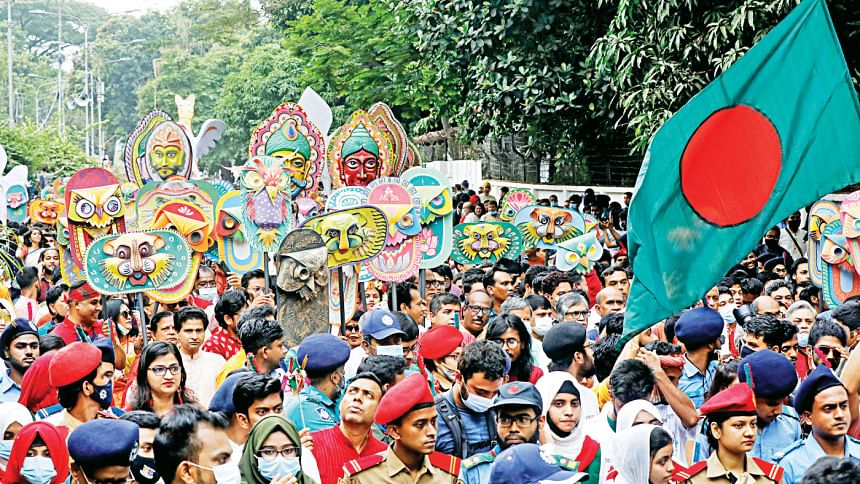
Baishakh this year
Every year, there is a theme that is decided after much thought. Social, political, and cultural factors all contribute to selecting the theme. This year's theme is "Barisho Dhara – Majhe Shantir Bari" which is essentially a prayer for peace considering the state of the world.
"The theme is chosen exclusively by a committee consisting of the Deans and VC," said Adrika who is actively working to make this year's Baishakh celebration a success.
Pahela Baishakh is such a significant part of Bengali culture that it has become part of our identity. There are very few events that can unify people at such a level with such grace. It's colourful and vibrant, and we hope it continues to keep the festive mood with colourful atmosphere forever.
Illustration: Biplob Chakroborty
Photo: Prabir Das

 For all latest news, follow The Daily Star's Google News channel.
For all latest news, follow The Daily Star's Google News channel. 



Comments